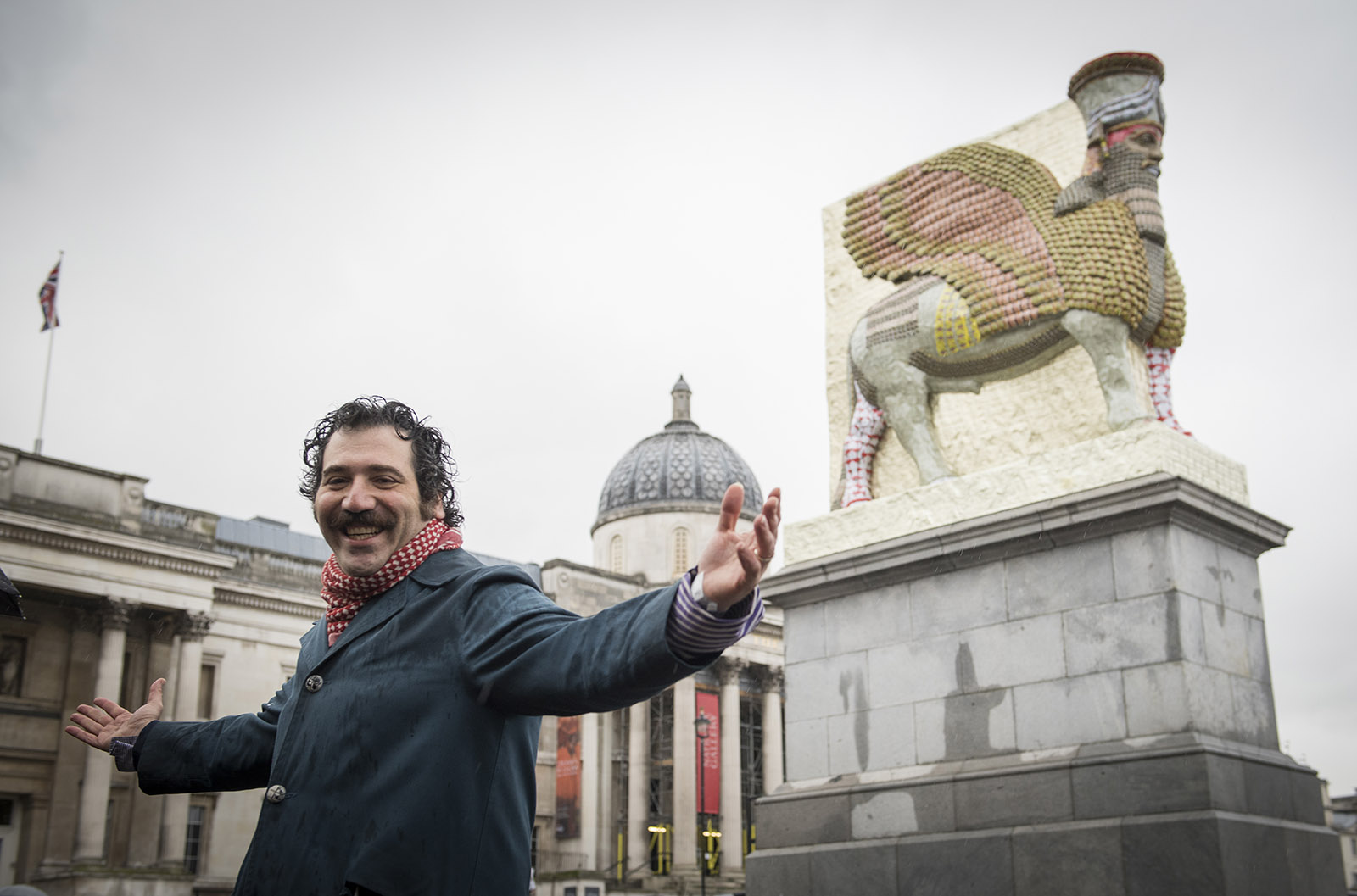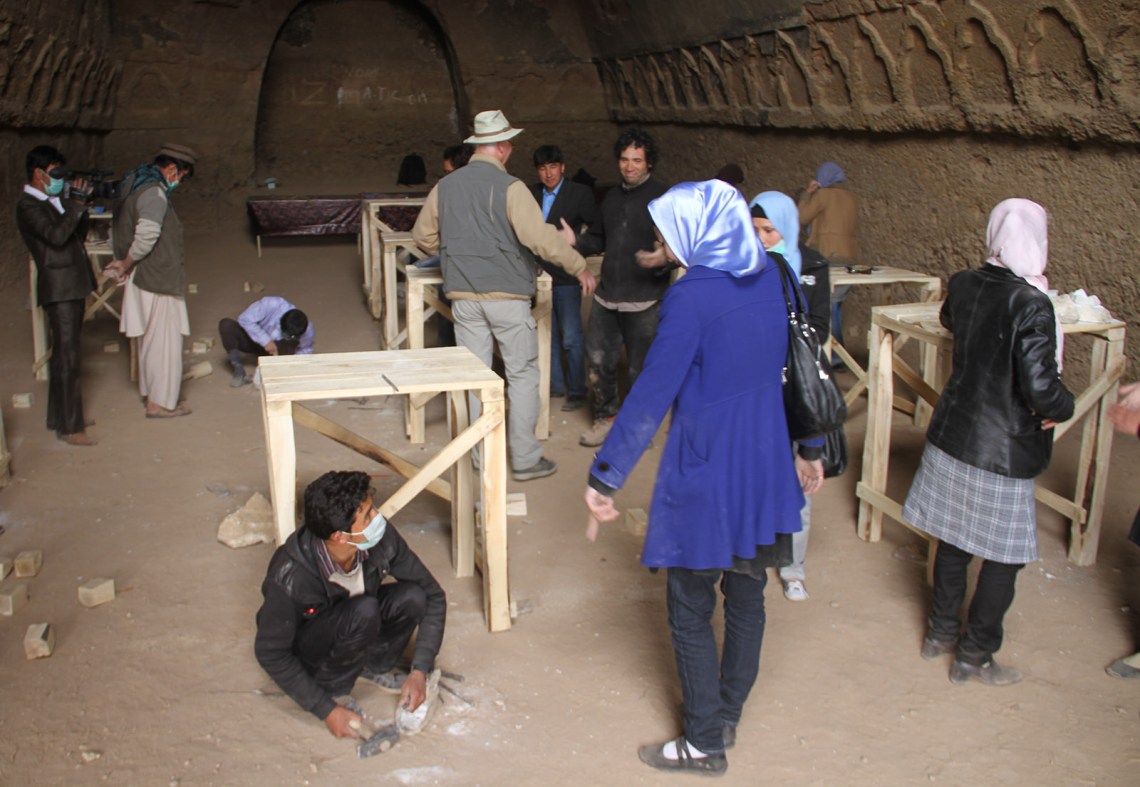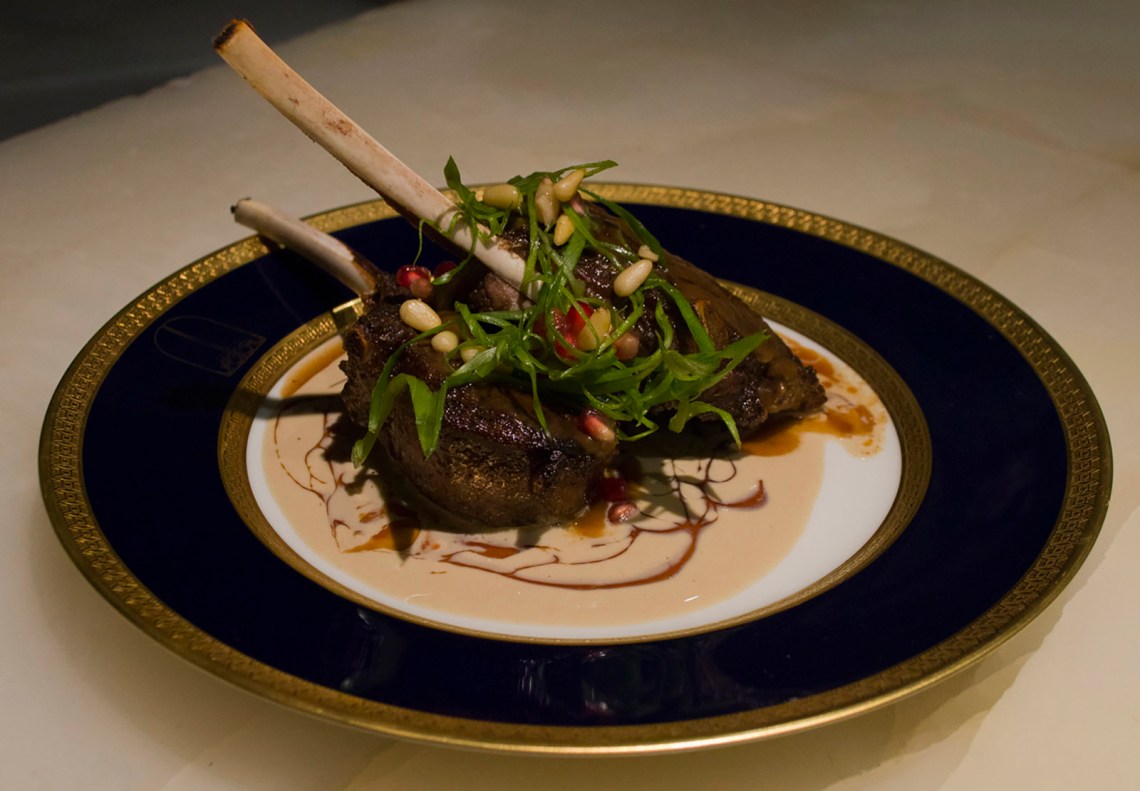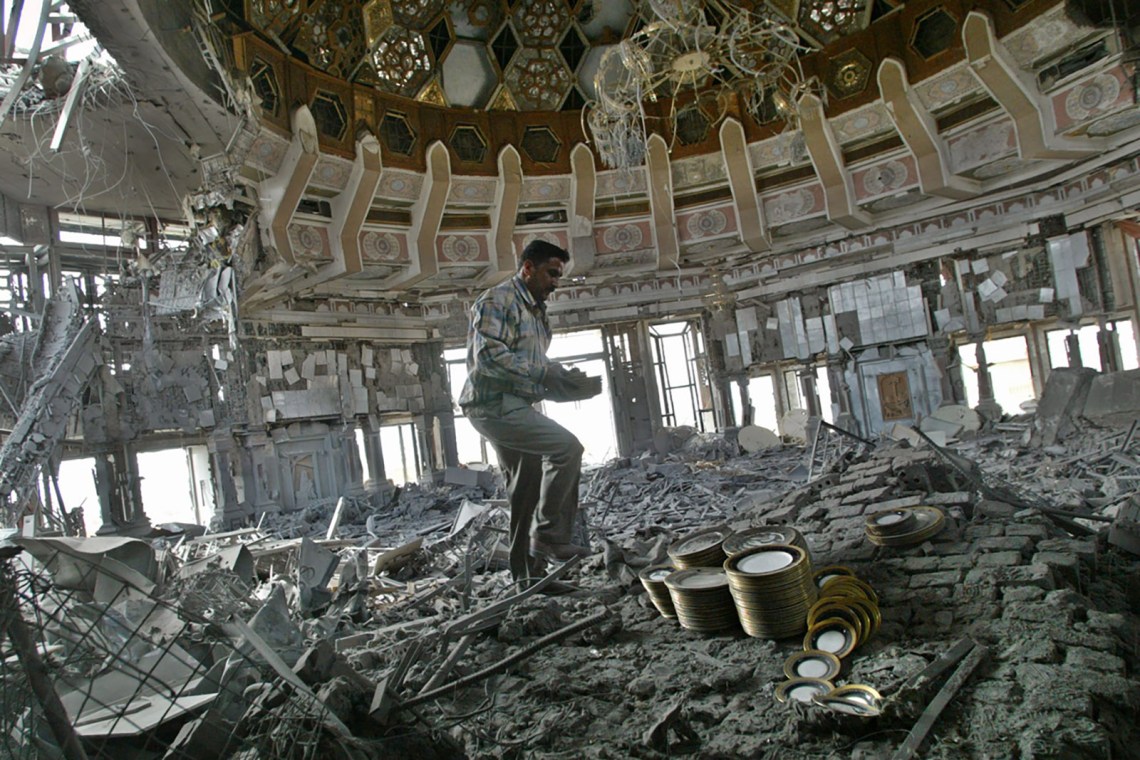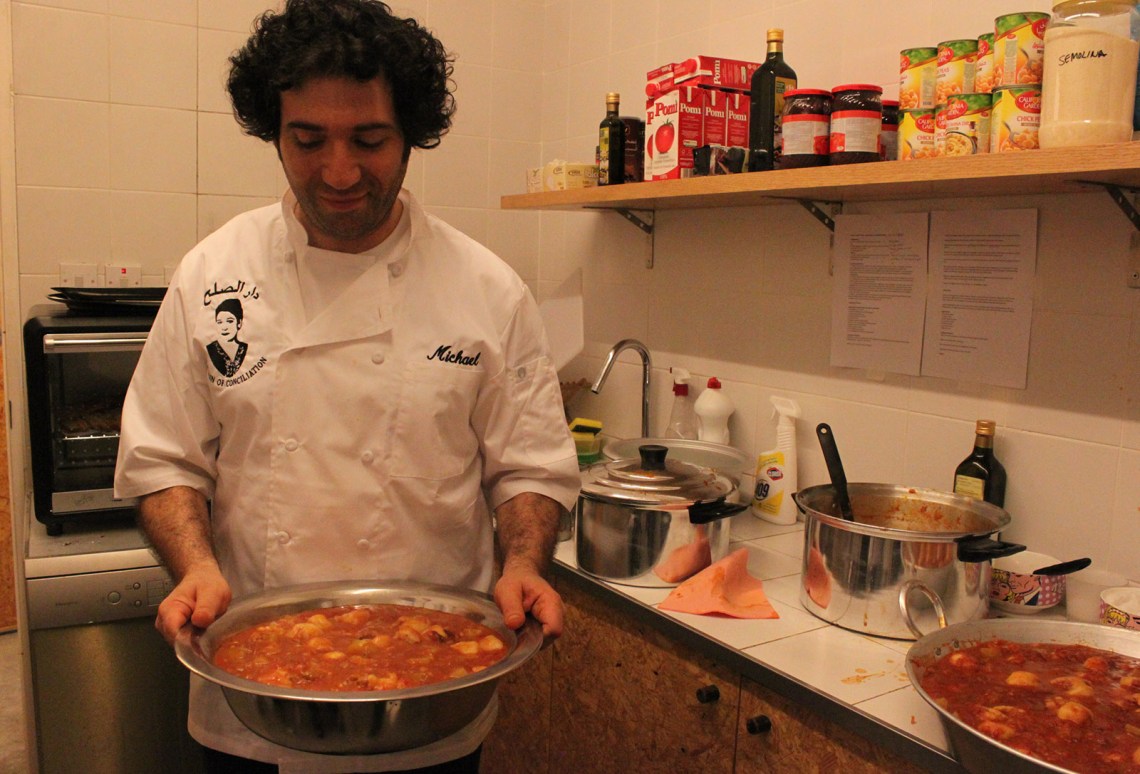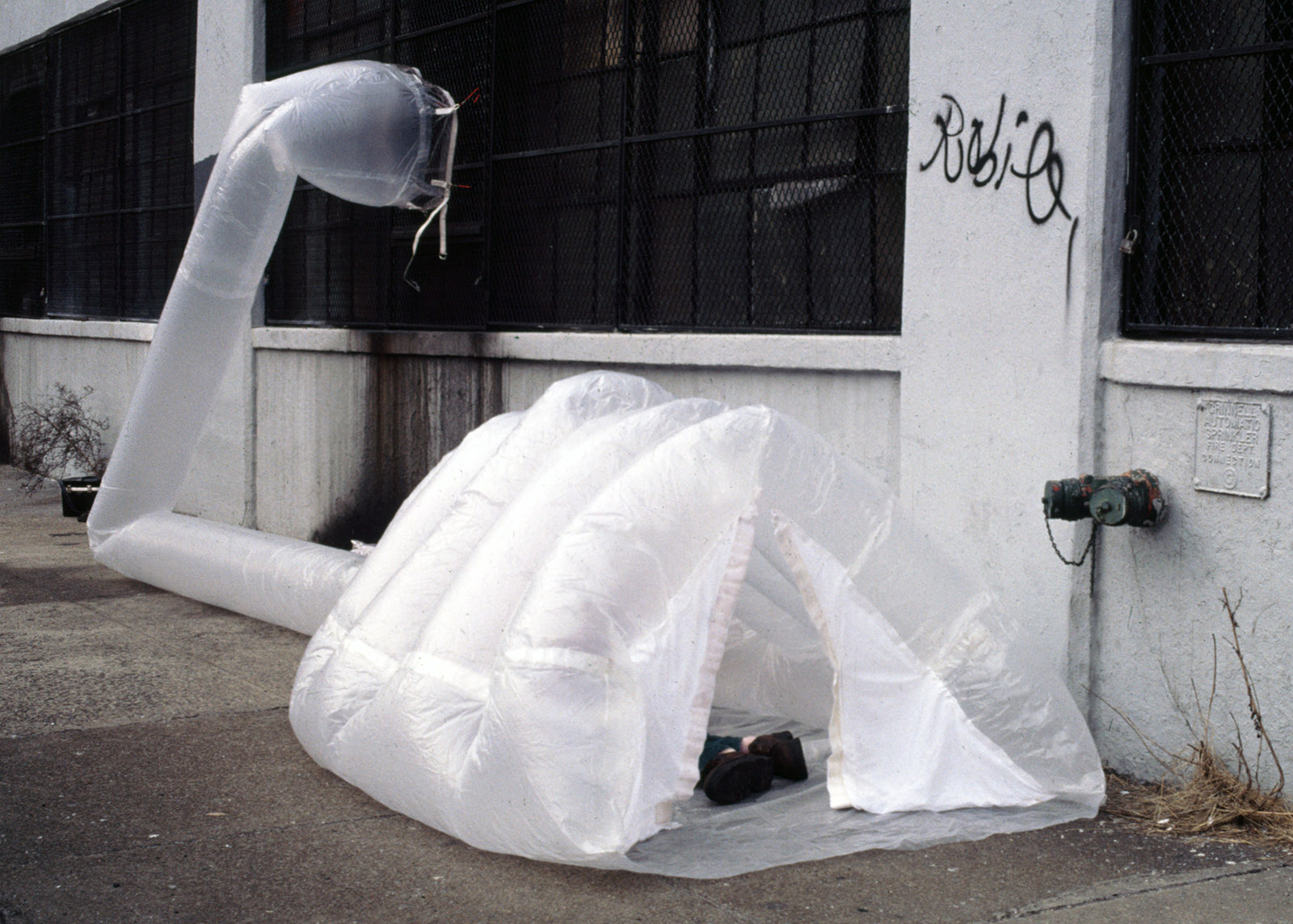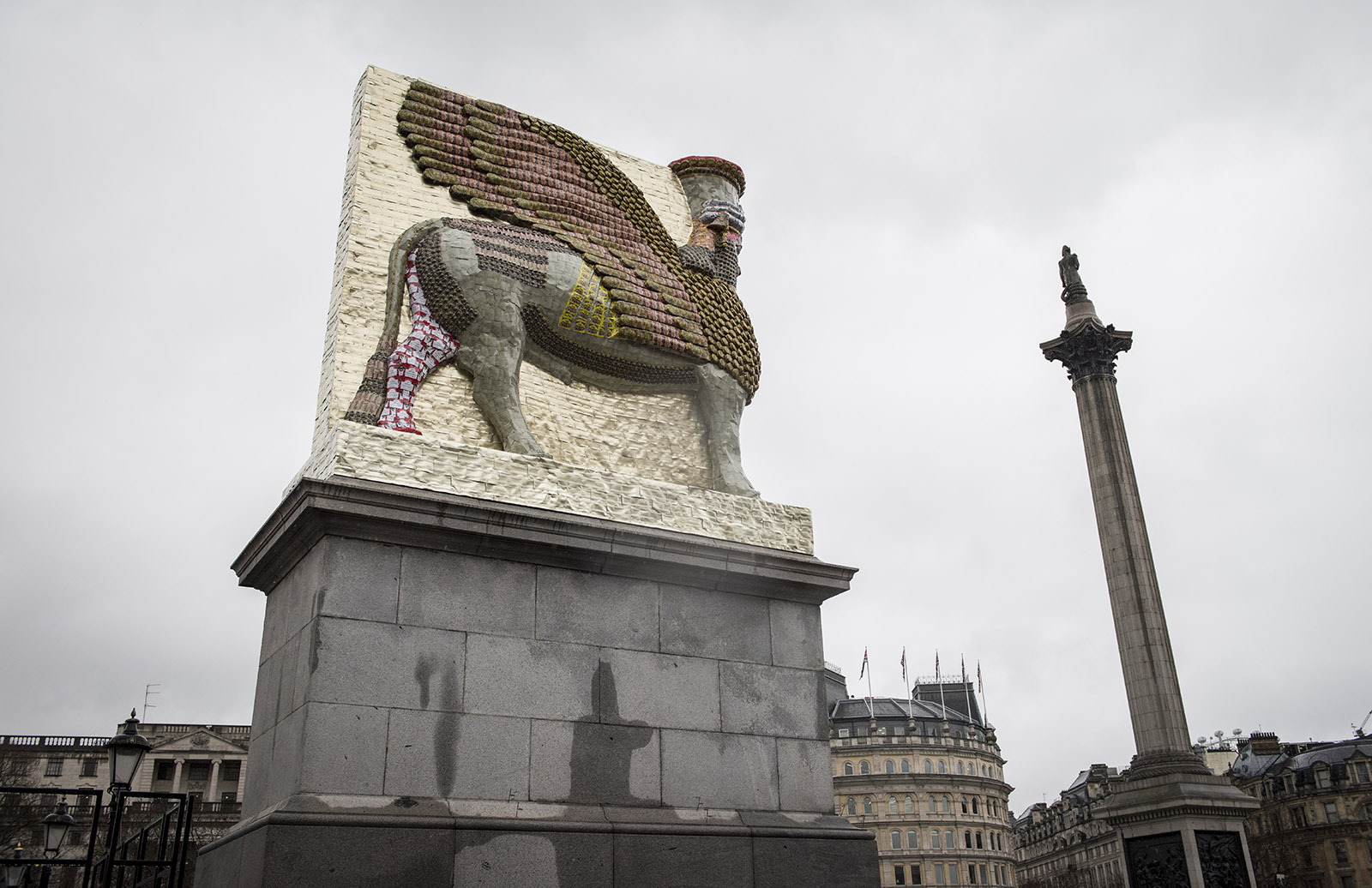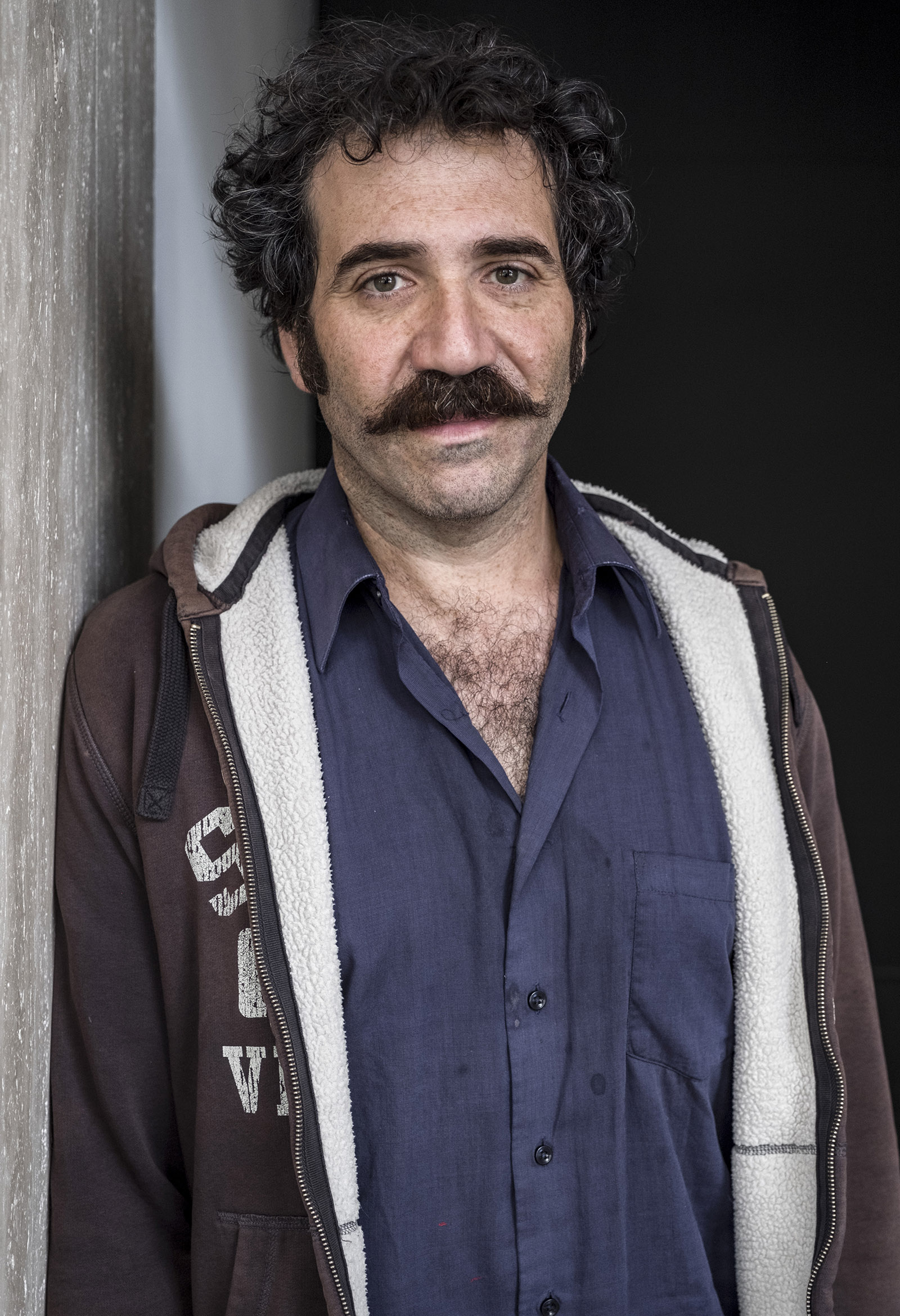The Iraqi-American artist Michael Rakowitz has never traveled to Iraq, but on the day we first met, he was technically on Iraqi soil. He had just wrapped his project Spoils, a performative culinary work in which he served venison, tahini, and date syrup (in Arabic, debes wa’rashi) to Upper East Side restaurant-goers atop plates believed to have been looted from Saddam Hussein’s palace just after the 2003 invasion. The Iraqi mission to the United Nations got wind of the project—and of the embellished alabaster and translucent Wedgwood plates used—and contacted the US State and Justice Departments to request their return. Rakowitz, who had bought the plates on eBay, met the two marshals sent to confiscate them and then followed their car to the Iraqi mission, adjacent to Central Park, where they were formally repatriated. Looking around the ornate, dimly lit lobby of the embassy, Rakowitz told me at the time, “We are on Iraqi soil; this is the first time my family has been back.”
Currently standing on Trafalgar Square’s Fourth Plinth (an imposing granite pedestal pinned to the northwest corner and designated as a site for public art commissions since 1999), is one of Rakowitz’s largest public projects to date—The Invisible Enemy Should Not Exist—a recreated version of the 700 BCE Lamassu, an Assyrian statue that was destroyed by ISIS in 2015. With a skin made from the eye-popping colors of more than 10,000 empty Iraqi date syrup cans, the winged bull underpins Rakowitz’s uncanny ability to evoke the sensual fragility of time. This arresting work, like much of his oeuvre, pushes us to reimagine ideas of community, ancestry, and the way larger political forces determine, or rewrite, our notions of self.
Rakowitz, now forty-five, arrived at these themes at a young age. His current survey show at London’s Whitechapel Gallery opens with an early work, Dull Roar (2005), an oversize vinyl model of the ambitious Pruitt–Igoe housing project, built in St. Louis in the 1950s. Designed in a Modernist idiom by the architect Minoru Yamasaki, Pruitt–Igoe was initially lauded but quickly began to deteriorate. Demolished less than twenty years after its construction, it became a symbol of government neglect and racial discrimination. Rakowitz’s edifice inflates and deflates on a timer, cheerfully rising only to succumb to a slow-motion collapse, mimicking the slum-clearance era’s cycle of promise and ultimate failure.
I spoke by phone with Rakowitz, who was in Chicago, about his more than two decades of artistic practice and his open-ended poetic explorations of cultural amnesia and the consequences of conflict and displacement. An edited and condensed version of the interview follows.
Marisa Mazria Katz: I had a recent conversation with someone from the State Department in which they told me that some of the Buddhas destroyed by the Taliban are finally being restored in the National Museum of Afghanistan in Kabul—just, as it seems, we may witness a transfer of power there. For your dOCUMENTA(13) project, What Dust Will Rise? (2012), you traveled to Bamiyan, Afghanistan, where you collaborated with a team that included an Afghan sculptor, and offered a stone-carving workshop to local students in a cave near where the Buddhas once stood. This, like so much of your work, focuses on the idea of absence.
Michael Rakowitz: What I’m very interested in is this notion of the ghost, the haunting, and the apparition, and what it means for something to be a spectral presence—something that’s always unstable. I’ve dedicated my life to making works that are about disappearance and reappearance, but also through means that are so vulnerable that it will disappear again. I’ve thought about the work that I do being a way of trying to articulate the ghosts that I see—the person being haunted is the one who sees the ghosts. With the Lamassu, which is one of my most public works, it’s an opportunity for all of us to see the same ghost at the same time.
There is also a story that absence can tell, which can be radically different to the stories of surrounding objects that still exist.
You know, it’s a little bit of a clichéd way of talking, that an absence creates a presence. But having spent so much time in Bamiyan—and looking at those voids—when you speak to the Hazara people who live in Bamiyan, they believe that those Buddhas are still there. And that those niches are keeping their spectral presence alive.
And what did you make of the decision, when UNESCO said the Buddhas cannot be rebuilt?
I think that’s for the people there in Bamiyan to decide. That’s a revolutionary impulse that speaks against our own formulated narratives, which is, “Well, they’re a Muslim population, why would they want Buddhist relics?” They projected their own meaning onto those Buddhas, and the way they understood their own history as Afghans and Hazara people. Those Buddhas had a place in their mythologies and in their iconographies, completely regardless of what religious purity we might be thinking is at play in the destruction of these monuments. It also speaks, a bit, to the way the Western gaze on these objects that are in unsafe conditions are worthy of being preserved; the same care is not visited on the people.
In your 2013 project Dar Al Sulh, you explored the disappearance of Arab-Jewish identity in the context of creating a temporary restaurant serving Iraqi-Jewish cuisine in Dubai. Here, your presence as an Iraqi Jew ignited something that in many ways is quickly fading from people’s memories—Jewish life in Arab countries. How does it feel to be an artist who embodies something rapidly disappearing from living memory?
This was really an invitation to do my [cooking workshop] Enemy Kitchen in Dubai. Enemy Kitchen began with my mother’s pointing to another absence on the first night of the [1991] bombardment of Baghdad. She turned my brothers’ and my attention away from the vulgarity of seeing these green-tinted, night-vision images on CNN of buildings being blown up. She pulled us away from this horrible, real-time experience of this place that my grandparents fled from, and said, “You know, there are no Iraqi restaurants in New York.”
That absence was like the riddle of the Sphinx that has basically been the engine for so much of this work that I’ve done in the past two-plus decades. Speaking to that, and trying to—in a very ad hoc way—address those works through an artwork and artistic practice that can only be described as a kind of triage. And a triage being tied to what [the artist] Krzysztof Wodiczko talks about with the bandage; that a bandage does two things—it simultaneously heals a wound and also draws attention to the fact that there is a wound. It’s almost messianic that people should not have bandages, because they should not have wounds. And, in a way, I become this uncomfortable bandage with Enemy Kitchen getting invited to Dubai.
Those tensions that I deal with in the work are part of the kind of “alhuluu w almri,” the “sweet-and-sour” that is part of Iraqi cooking. But it’s also what allows for this work to be held in a space that is tense, that’s what creates the flavor and ability to do something like that.
It was a kind of provocation that I addressed with the curators—if I was to do something about the intersection between the hospitality and hostility, I would do a restaurant that was about Iraqi-Jewish food that was the first Iraqi-Jewish restaurant opening up in the Arab world in over eighty years.
Spoils was a project in which you served dinner to restaurant-goers on plates supposedly looted from Saddam Hussein’s palaces. It was a powerful and provocative exercise.
It was an opportunity for me to look at the way that restaurants have now become like sites not unlike museums, where provenance is mobilized. As when you get a menu that tells you where your arugula comes from—it’s a way of making the diner feel good. I wanted the diner to feel bad. I wanted the chef to work with Iraqi date syrup and to say, “Iraqi date syrup.” [The chef] Kevin Lasko, brilliantly said I’m going to do something that’s the American deer hunt meets the Iraqi date harvest—so it was venison served on top of date syrup.
It was served on one of these eighteen plates we procured on eBay from two different sources: one an Iraqi refugee living in Michigan, and the other an American soldier stationed in Baghdad. We were able to use this device of the menu, and the pleasant situation of consuming a meal, as a site for something that was unpleasant; instead of turning hearts and minds, you’re also turning stomachs.
On plates that, presumably, Saddam Hussein or someone in his presence ate from.
And if you think about the way those plates got to your table—with this insidious American project of “nation building,” with ulterior motives for other things—then you have this moment of implication. There were many diners who said, “I refuse to eat off the surface; I want this dish.” But you can’t have the dish without the surface. Just as much as the project is about consumption, it’s even more about refusal. That kind of tension is something that I feel a lot in my work; also, with the things I will do and what I won’t do.
And this also came up when you turned down the invitation to participate in the Whitney Biennial, which is dealing with protests over the museum board’s vice-chairman, who runs a company that makes equipment, including tear gas, reportedly used by US Customs and Border Protection agents against asylum-seekers at the Mexican border.
This is about those things you can’t do even though you want to. It’s not just about pleasure denial, it’s like a fast. These are moments that are still holy in my life. And even though I am not what I would call a religious Jew, there are rituals, practices, and repetitions that are part of this religious background that are a great way of constantly reminding oneself of ethics and actually hoping for something better than what we have right now.
One of your earliest projects is paraSITE, where you built inflatable shelters for homeless people that affix to HVAC vents in the winter. The hot air blows out from a building and creates these temporary homes. And they exist right there on the streets, or next to buildings. When you talk about that project, you frame it as visibility being somewhere on the road to equality.
Hannah Arendt says that almost exactly. We need more than visibility. It is only one point on the road.
In the case of paraSITE, it more visibly enunciated the ecological waste streams that exist in urban space. It was being able to take something as invisible as warm air being evacuated from a building’s HVAC system and creating that one moment of possibility that is very fleeting—where that air that’s the same temperature as the inside goes to the outside.
And how does this kind of work synchronize with the rest of your oeuvre?
This is a direct through line to my material culture throughout my practice. If you look at the Lamassu, it’s the same thing as paraSITE—where using rubbish bags and weatherproof packing tape was important to me and continues to be. I do this project every winter. These are vulnerable materials that speak to the urgency of what’s being addressed.
And how was this urgency used with the Lamassu, which is also part of your ongoing series The Invisible Enemy Should Not Exist?
When it comes to something like the Lamassu, and that material culture of a larger practice of The Invisible Enemy Should Not Exist, what I make can only ever be a mutant. What comes back is not a reconstruction, but something I’ve started calling “a reappearance.” If you have something that is a ghost—that needs to haunt—it can never be what it was before; it can never be the gypsum, or the limestone, or the alabaster that these objects were. It needed to wear the skin of the object that couldn’t tell you where it was from.
You were already conducting research on reconstructing the Lamassu destroyed by ISIS when you were nominated by the London mayor’s office to submit a proposal for the fourth plinth. Miraculously, it turned out the original Lamassu was the same size—fourteen feet—as the fourth plinth.
I thought to myself, what else would I do?
Then it became about the design of the piece.
As I started to put together the proposal the question was: What’s going to stand up to the British weather? It was clear that finally I would have an opportunity to use these date syrup cans that I’ve been collecting all these years since I started Return [in 2004]. The proposal was basically like a kind of chorus, or an orchestra, of all these different brands that were not able to declare themselves as a product of Iraq, anchored by one brand that could. The entire wing of the Lamassu, all those feathers, are made by two brands [of date syrup] that are able to declare themselves as products of Iraq.
You worked on the project at a time of enormous upheaval—in the UK, it was dealing with Brexit and continental Europe was seeing waves of mass migration. How much did the political moment affect the concept and execution of the work?
The subject of forced migration and the horrible circumstances that people are made to face when they’re fleeing disaster—and the tragedy and trauma from one home, and trying to find a home in another place that only continues to traumatize them—is something that happened long before Brexit, and has happened long before Trump became president. I don’t want to necessarily just intersect the work with what is considered to be a kind of almost marketable cause. This is not going to disappear when somebody other than Trump is elected. And it’s not going to disappear after Brexit is resolved.
So these works should not be viewed as responses to current political moments?
It’s really important that these projects are not necessarily seen as some urgent reaction to the times. But it’s—unfortunately—a practice that needs to be sustained and be steadfast because the problem has been there for a long time and it doesn’t disappear. This is one of my rationales for the ongoing nature of my work. With the bulk of my projects, they are all “1997 to ongoing” or “2006 to ongoing.” The problem hasn’t disappeared, so why should my commitment to the project disappear?
During the fourth plinth jury’s deliberation, they had asked if you were open to turning the Lamassu around—rather than the way it is currently facing, which makes the back more prominent than the front. Why did you keep it positioned this way?
When you place it that way, it looks as though the Lamassu is walking into the National Gallery, walking into one more British museum (the British Museum itself has several of those Lamassu). I said there’s no way that I am going to allow for this Lamassu to look like it is one more piece that is going to be sheltered in this Western museum. I’m very happy to say that the Lamassu stands there with its ass to the museum and it’s actually looking southeast toward Parliament, and toward the Foreign Office where the decision to enter the Iraq War was made. It’s also looking past them, toward Nineveh, toward Iraq, hoping that it will return one day.
With the What Dust Will Rise? project, the students you taught in the Bamiyan caves were taking risks by working with you. And you, too, were doing the same by traveling there, leaving your family, and taking on this project. How would you describe that commitment— the feeling that drives you?
It’s a question that I’ll work to answer for the rest of my life. One of the things that I feel very committed to is working against this interruption of traditions, of craft. For allowing for transmissions to be uninterrupted. To make sure that we transmit to each other, and transmit through, the things we make for each other, that are not the kinds of things one can cynically reduce to something that is marketable. It’s about intimacy. It’s about relationships. It’s about trust. It’s about slowing down. It’s about thinking together and breathing together. And doing all of these things that support one another. We should allow for those spaces that open up to surprise us.

